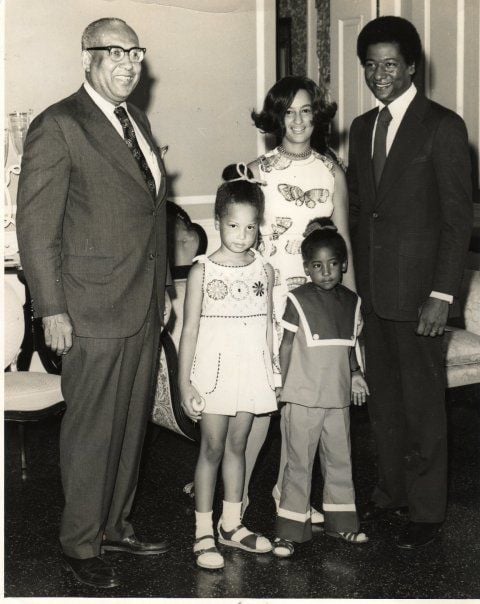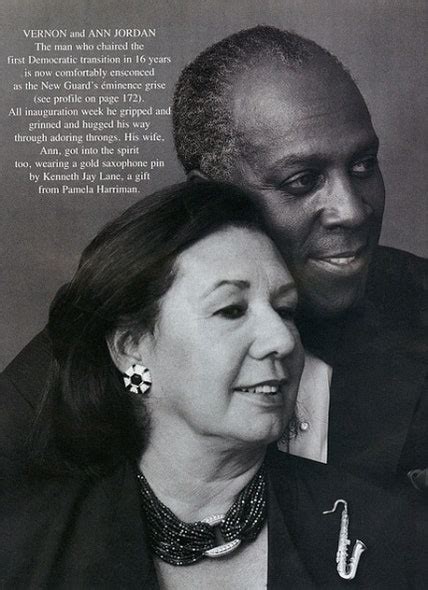IllmaticDelta
Veteran
@Dorian Gray
to follow up this observation that you once made,
Adele Logan Alexander own words:
Also looked into this interesting part:
Tracing the Family Legacy From My Suffragette Grandmothers
and found


.
.
the "whiter" looking but black-identified sister
 [/quote]
[/quote]
Never seen it.
This is her sister. Same parents.


Her mother was like my grandmother. Had a thing for dark skin men.
Actually, most of them do.


In reality, this was the actual black elite power couple.
.But as to her father's credentials.
And actually, I think her mother, even though very fair, I think her father was brown skin as well. I read their family biography about 20 years ago and I think she said that's what attracted her to Harold because he in some ways reminded her of her father
to follow up this observation that you once made,
Adele Logan Alexander own words:
I grew up in a family whose members proudly considered and spoke of themselves as “Negroes.” They healed, taught, and counseled “Our People,” identified with and staunchly defended “the race,” never boasted of their Native American or white “blood,” but were mostly blue-, green-, or hazel-eyed and paler skinned, narrower featured, and straighter haired than many of my Jewish friends at school and my diverse, upper-Manhattan neighborhood’s Italian American cobblers and greengrocers. And those relatives who looked “white” all had darker-skinned spouses. It didn’t seem unusual to me. That’s just how my world was populated.
Also looked into this interesting part:
I also heard about my father’s “mystery uncle” Thomas Hunt (he roared with laughter about having an “Uncle Tom”), who’d “disappeared” in California, where he saw his even whiter-looking but black-identified sis- ter Sarah “by appointment only.” And once a year, my own uncle Paul came from “way out west” to visit us.
Tracing the Family Legacy From My Suffragette Grandmothers
and found


Thomas Francis Hunt, Agricultural Extension: Berkeley and Riverside
1879-1942
Associate Professor of Agricultural Extension
The death of Thomas Francis Hunt in Berkeley on September 27, 1942, brought to an end a career of almost forty years spent in the service of the College of Agriculture. A lifetime in carrying to the farms and farmers of California a better knowledge of improved practices as developed by this and other institutions brought Hunt into a broad and intimate acquaintance with the agriculturists of the State. Many are those who will miss his helpful service.
Born of old American stock in Sparta, Georgia, on July 16, 1879, Hunt moved in boyhood to Massachusetts. There he was tutored by a devoted sister whose assistance enabled him to enter and later to graduate from the State Agricultural College in 1905, with a major in horticulture and plant pathology. Although entirely self-supported by means of student work in the Experiment Station, Hunt found time during college days to develop a high degree of proficiency in athletics, especially basketball and baseball, and to take part in other college activities. He became well-known in his earlier days in California as a semiprofessional baseball pitcher. In 1905, the year of his graduation from college, he was appointed to the College of Agriculture of the University of California, as an assistant in the newly organized Division of Plant Pathology. In this field he took an active part in the first experiments and research on some of California's most important plant diseases, including pear blight, peach blight, and the curly top of sugar beets.
In September, 1906, he was transferred to Riverside, as one of the first two men in charge of the newly established Citrus Experiment Station on Rubidoux Heights, where he remained until his return to Berkeley in 1909 as Chief Field Assistant in Plant Pathology. During the reorganization and expansion of the College of Agriculture beginning in 1912, his broad acquaintance with the agriculture of the state was recognized by his appointment to the position of Assistant Professor of Agricultural Extension, followed by advancement in 1919 to the Associate Professorship, a position held until his death. In his work for the Agricultural Extension Service, he was for many years in charge of the work in counties which had no regular Farm Advisor, acting also as specialist in horticulture and plant diseases. His touch with practical agriculture was furthered by his ownership of agricultural lands in the Sacramento Valley, upon which he grew orchards of peaches and pears.
Professor Hunt was married to Jane McKeand in June, 1916. Their two sons, Thomas Davis and Daniel Eugene, were educated at the University of California. The latter son, Daniel, was killed in the service of his country and in the performance of duty as an ensign in naval aviation, in January, 1943.
In the broad field of the public service of the University of California, as well as among his fellow faculty members and other associates, the passing of "Tom" Hunt will mean to many the loss both of a conscientious public servant and a personal friend.
Son of Capt. Henry Alexander (C.S.A.) and Mariah "Cherokee Mariah Lilly" Hunt Hunt, Sr.
Ambiguous Lives, Free Women of Color in Rural Georgia, 1789 - 1879 (1991).
Author, Adele Logan Alexander (Mrs. Clifford Alexander), Washington, D.C.
.
.
the "whiter" looking but black-identified sister





























